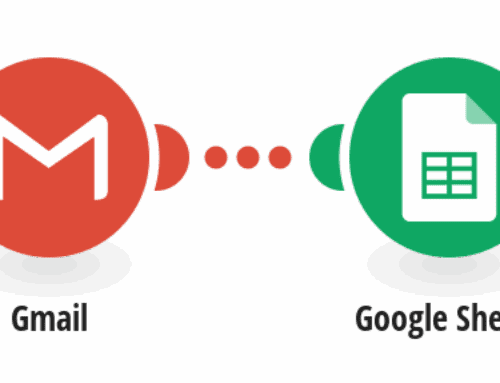Getting the Most Out of Google Analytics: Understanding Traffic Sources
Introduction to Google Analytics
Welcome to the world of Google Analytics, your go-to tool for dissecting the mysteries of website traffic. If you’re not already using it, you’re missing out on some serious insights that can drive your business forward. It’s like having a magnifying glass over the internet, helping you see where visitors are coming from and what they’re doing on your site.
Why is this important? Well, understanding where your traffic originates is crucial for fine-tuning your marketing strategies. Without this knowledge, you’re essentially shooting in the dark, hoping to hit something worthwhile. But with Google Analytics, you can become the sharpshooter of the digital world.
The Basics of Traffic Sources
So, what exactly are traffic sources? In the simplest terms, they are the avenues through which visitors find your website. Imagine a bustling city with roads leading to different destinations; traffic sources are those roads, bringing potential customers to your doorstep.
These can include organic search results, direct visits, referrals from other websites, social media channels, and paid advertising campaigns. Each source gives you a piece of the puzzle, showing you how people are discovering your brand. Knowing these pathways helps you optimize them to increase web traffic and boost engagement.
Organic Search Traffic
Organic search traffic is the holy grail of all internet traffic sources. It’s when users find your site through search engines like Google without the influence of paid ads. Think of it as a free footpath directly to your digital storefront, one that leads engaged users ready to explore what you have to offer.
The greatest advantage here is cost-effectiveness. With a solid SEO strategy, you can ensure a steady flow of organic traffic that doesn’t break the bank. The more visible you are in search results, the more potential customers you’ll attract naturally.
Paid Search Traffic
While organic traffic is valuable, sometimes you need to give your visibility a little paid boost, and that’s where paid search traffic comes into play. This involves using ads to put your website at the top of the search engine results pages (SERPs), ensuring more eyes on your content.
This approach gives you control over your audience targeting, allowing you to tailor ads based on demographics, interests, and behaviors. It’s a bit like placing a beacon that calls out to specific sailors in a vast digital ocean, guiding them straight to you.
Referral Traffic and Its Impact
Referral traffic is another key player in the traffic game. This is the traffic that comes from other websites linking back to you. Consider it as word-of-mouth in the digital realm. When other sites mention and link to you, they are essentially giving you a vote of confidence.
These referrals not only boost your traffic but also enhance your site’s credibility and domain authority. Receiving endorsements from trustworthy sources can dramatically improve your SEO rankings, thus attracting even more visitors.
Social Media Traffic: The Modern Marketplace
In today’s interconnected world, social media platforms are bustling marketplaces. Facebook, Instagram, Twitter—they are all treasure troves of potential traffic waiting to be tapped into. Social media traffic occurs when users click through to your site from these platforms.
Energizing your social media presence can significantly increase your website traffic. Engaging content that encourages likes, shares, and comments will amplify your reach and, ultimately, your website’s visitor numbers. Think of it as a chain reaction, where each interaction sparks another potential visit.
Direct Traffic: What It Tells Us
Direct traffic is like having regular customers who know your store’s location by heart. These are visitors who enter your website URL directly into their browsers. The significance of direct traffic lies in its reflection of brand recognition and customer loyalty.
Tracking direct traffic helps you understand the effectiveness of your offline advertising efforts and brand-building activities. If people are visiting your site directly, it means they’re engaged with your brand, which is always good news.
Using Google Analytics to Optimize Your Strategy
Now that you’ve got the basics down, it’s time to use Google Analytics to turn these insights into action. By monitoring traffic patterns, you can adjust your marketing strategies to focus on what’s working and what needs improvement.
With Google Analytics, you’re not just a passive observer but an active participant in shaping your online presence. It’s like having a dashboard full of controls, allowing you to steer your website’s performance towards success.
Conclusion: Harnessing the Power of Data
Understanding your traffic sources through Google Analytics is akin to wielding a flashlight in a dark room—you gain clarity and direction. By identifying which channels are bringing in traffic, you can tailor your marketing efforts to enhance performance and reach new heights.
Remember, data is power. Let Google Analytics be your compass as you navigate the often turbulent seas of online marketing. With these insights, you have the tools to drive your brand towards uncharted territories of success.
FAQs
What is the most valuable traffic source?
Organic search traffic is often considered the most valuable due to its sustainability and cost-effectiveness. Users finding your site through organic means tend to be more engaged.
How can I increase referral traffic?
Collaborate with other websites and industry influencers to exchange links and boost your site’s credibility. Guest blogging and press releases can also help greatly.
Why is my direct traffic high?
High direct traffic could indicate strong brand recognition or effective offline marketing efforts. Ensure that your branding and promotional activities are consistent.
What role does social media play in generating traffic?
Social media serves as a dynamic platform for engaging audiences. By creating captivating content, you can lead users to your website and expand your reach.
How often should I check my Google Analytics?
Regular monitoring is key, so aim to check in at least weekly. This helps you stay on top of trends and quickly implement any necessary changes to your strategy.










